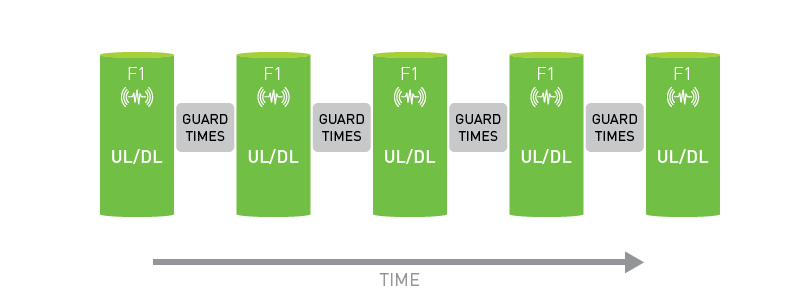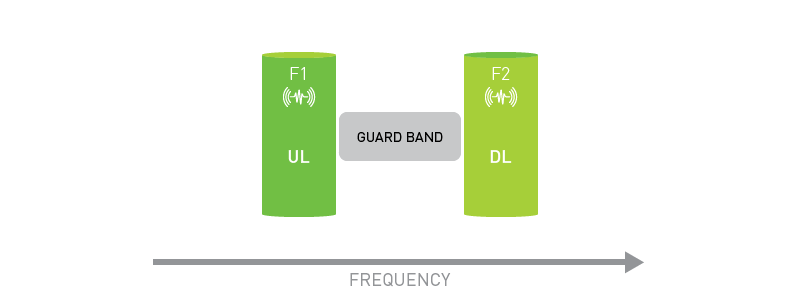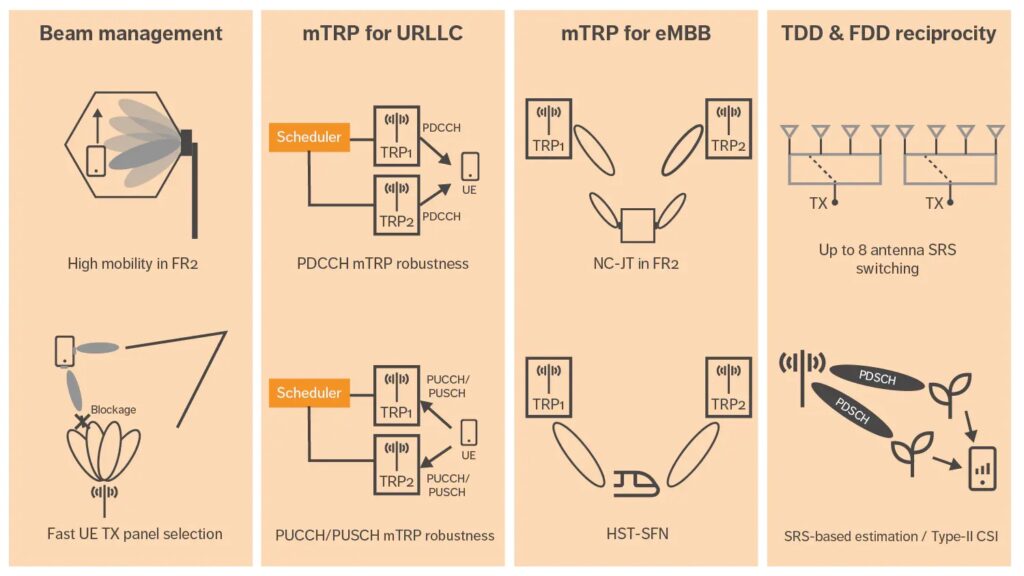While typically associated with TDD systems, enabling both TDD and FDD reciprocity is important to achieving 5G Advanced capabilities
Time Division Duplex (TDD) and Frequency Division Duplex (FDD) are two different spectrum usage techniques employed by mobile operators. While FDD requires two separate frequency bands or channels with a sufficient guard band in place to separate the transmitting and receiving channels to prevent interference, TDD systems use a single frequency band for both transmit and receive, assigning alternative time slots for transmit and receive operations. In FDD systems, frequency allocation for uplink (UL) /downlink (DL) capacity is predetermined based on the system needs, and so, it is not possible to dynamically change capacity. By contrast, time slots in TDD systems can be dynamically allocated and variable in length based on network needs.
In general, FDD is considered better for coverage, while TDD is better for capacity.
TDD multiple-input, multiple-output (MIMO) systems also have an inherent feature called channel reciprocity, which significantly reduces the overhead in downlink channel estimation, increasing spectral efficiency (SE) when compared to FDD MIMO systems.

TDD systems use channel reciprocity to obtain UL/DL channel knowledge from DL/UL channel measurements without additional feedback, allowing the transmitter to estimate the downlink channel from the sounding on the uplink channel.
In an FDD system, on the other hand, the transmitter typically gets the DL channel state information via a variety of feedback strategies. Channel reciprocity-based operation has proven to achieve better performance and is particularly beneficial for Multi-user, multiple-input, multiple-output (MU-MIMO) scheduling, but is also more finicky as it relies on accurate calibration of the transceiver RF chains at the gNodeB.

Channel reciprocity enhancements in 3GPP release 17
While typically associated with TDD systems, enabling both TDD and FDD reciprocity is important to achieving 5G Advanced capabilities. Rel-17, therefore, outlines significant enhancements to several radio access network (RAN) functionalities that are already deployed in live New Radio (NR) networks, including MIMO enhancements that address four areas, one of which is TDD and FDD reciprocity. The other related areas are beam management; multiple transmission and reception point (mTRP) for ultra-reliable, low-latency communication (URLLC); and mTRP for enhanced mobile broadband (eMBB).

On the reciprocity enhancements, in particular, Ericsson commented: “The enhancements to reciprocity-based operation include new codebooks with reduced feedback overhead, where partial channel knowledge is available at gNodeB (gNB), as well as improvements to the Sounding Reference Signals (SRSs).”
The post Channel reciprocity enhancements in 3GPP release 17 appeared first on RCR Wireless News.
